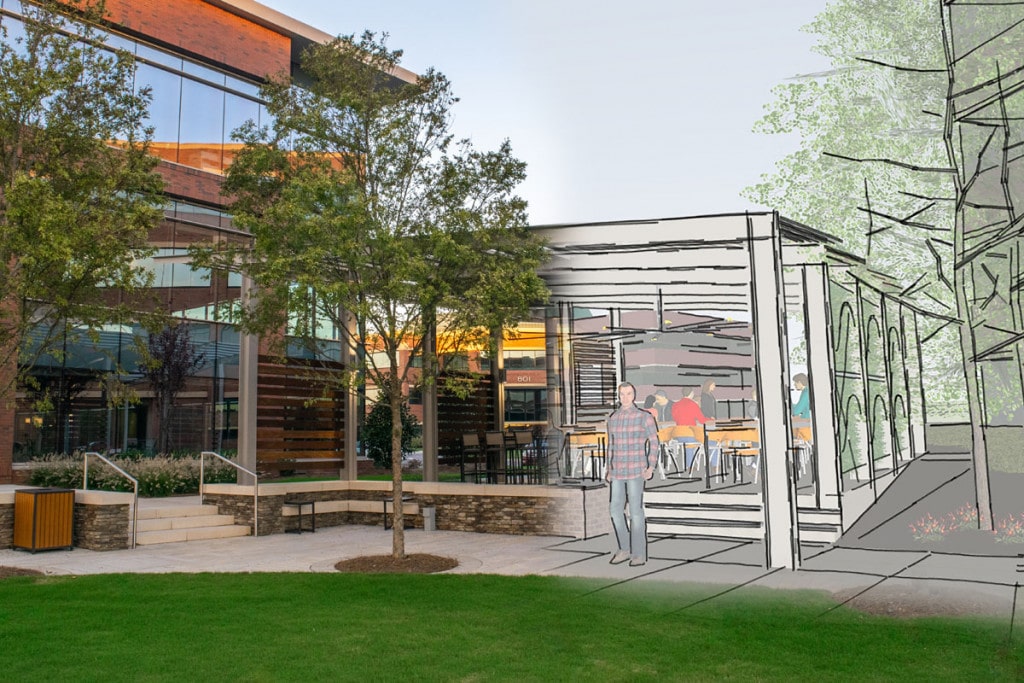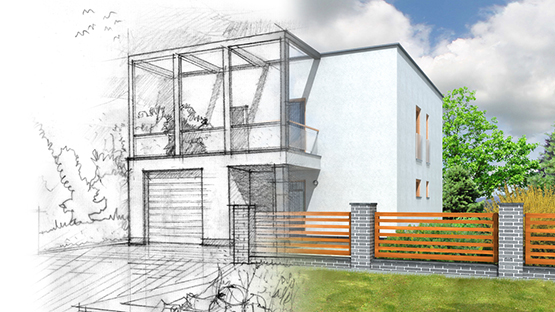An Extensive Summary of Architectural Styles and Their Impact on Modern City Preparation and Development
Architectural styles have long served as a mirror to the societal worths and technical developments of their time, playing a critical role in forming contemporary city preparation and growth. From the splendour of Neoclassicism to the utilitarian approach of Brutalism, each style has actually presented one-of-a-kind ideas that influence urban appearances and functionality.

Historic Summary of Architectural Styles
Throughout history, architectural styles have evolved in feedback to cultural, technical, and environmental factors. Each duration shows the dominating worths, ideas, and innovations of its time, resulting in a rich tapestry of style that indicates human creativity and adjustment. The ancient people, such as the Egyptians and Greeks, established fundamental designs that highlighted symmetry and proportion, serving both practical and aesthetic objectives.
As cultures transitioned with the Center Ages, Gothic style arised, defined by its verticality and detailed detailing, mirroring the spiritual ambitions of the era. The Renaissance noted a rebirth of classic ideals, merging art and design in ingenious ways that affected subsequent designs throughout Europe.
The Industrial Revolution introduced new materials and building strategies, motivating movements like Innovation, which tested conventional kinds and welcomed simpleness and functionality. The 20th century saw a diversification of designs, with Postmodernism responding versus the stark minimalism of its predecessor, incorporating historic references and diverse components.
Today, building designs remain to progress, driven by globalization and sustainability worries, mirroring a dynamic interplay between heritage and technology (cda architects). This historic review emphasizes the relevance of design as a mirror of societal development and as a stimulant for city development
Secret Architectural Styles Explained
The variety of architectural styles reflects the myriad impacts that form our constructed atmosphere, each symbolizing distinct features and social significances. Trick building styles consist of Classic, Gothic, Baroque, Modernism, and Postmodernism, each standing for special historical contexts and visual ideologies.
Classic style, rooted in ancient Greece and Rome, highlights balance, percentage, and using columns. On the other hand, Gothic style, prospering between Ages, is identified by pointed arcs, ribbed vaults, and flying buttresses, producing a heavenly top quality in cathedrals. Baroque design, arising in the 17th century, is noted by magnificence, fancy decoration, and a vibrant interplay of light and shadow.
Modernism, which acquired momentum in the early 20th century, prioritizes feature over type, utilizing brand-new products like steel and glass to create minimalist frameworks. Postmodernism, responding against the austerity of Modernism, accepts eclecticism and historical recommendation, often incorporating playful elements and irony.
Understanding these styles provides insight right into the social narratives and technological improvements of their particular ages, highlighting exactly how architecture serves not equally as a shelter, but as a reflection of social worths and ambitions.
Effect On Urban Planning
Fit the advancement of cities, architectural designs dramatically influence city planning choices. The selection of building design commonly determines the appearances, functionality, and total character of urban environments. cda architects. For example, innovation, with its focus on minimalism and functionality, encourages open rooms and the assimilation of modern technology, shaping city designs that prioritize performance and accessibility. On the other hand, standard styles may emphasize historic preservation, causing urban styles that keep cultural heritage and promote pedestrian-friendly environments.
In addition, building styles can affect zoning policies and land use plans. Urban coordinators must think about the prevailing architectural trends when creating areas, making sure that brand-new growths balance with existing structures. This consideration fosters natural urban landscapes and enhances area identity.
The implementation of certain building styles can also affect socioeconomic aspects within a city. As an example, high-end modern layouts might draw in upscale citizens and businesses, leading to gentrification, while much more cost effective housing remedies could focus on useful and lasting styles to accommodate varied populaces. Ultimately, the interplay between building designs and city this website preparation produces vibrant cities that mirror both historic context and modern requirements, shaping the lived experiences of their occupants.
Sustainability and Modern Design

Contemporary building motions, such as biophilic layout and green design, advocate for frameworks that integrate with their surroundings, using all-natural materials and advertising biodiversity. These styles usually include sustainable energy sources, such as photovoltaic panels and wind turbines, to decrease reliance on nonrenewable fuel sources and reduced carbon impacts.
Moreover, the combination of innovative technologies, such as smart building systems, boosts energy management, enhancing resource usage while making certain passenger convenience. Cutting-edge water monitoring approaches, consisting of rain harvesting and greywater recycling, more add to lasting metropolitan atmospheres.
Especially, sustainability expands beyond ecological issues; it encompasses social and financial measurements as well. By cultivating neighborhood wellness and promoting inclusivity, contemporary architectural styles align with lasting development goals. The evolution of building techniques proceeds to shape durable cities that not only satisfy the needs of the present however additionally secure the future for generations to come.
Community Engagement in Design
Area engagement in style serves as a crucial bridge in between architects and the populaces they offer, ensuring that the developed setting reflects the demands and aspirations of its customers. This collective process invites area members to add their understandings and choices, promoting a sense of ownership and duty toward the rooms they populate.
Efficient community involvement employs various approaches, such as workshops, surveys, and public online forums, to collect varied viewpoints. These techniques promote a two-way dialogue, permitting architects to recognize local contexts while equipping homeowners to voice their worries and wishes. This inclusivity not just improves the layout high quality but also advertises he has a good point social equity by dealing with the unique obstacles encountered by marginalized teams.
Furthermore, community interaction can result in cutting-edge services that may not arise in a conventional layout procedure. By incorporating neighborhood understanding and social worths, engineers can produce areas that resonate more deeply with customers, improving functionality and sustainability. Eventually, prioritizing community involvement in style procedures causes environments that support social interactions, assistance health, and reinforce area ties, thus playing a pivotal function in shaping modern-day city landscapes.
Verdict
Architectural styles have actually exceptionally affected modern-day city planning and growth, mirroring progressing cultural and technical contexts. The combination of historic looks with modern requirements promotes metropolitan atmospheres that focus on sustainability and area engagement. As cities continue to expand check out this site and adapt, the ongoing discussion between building heritage and modern design principles will certainly stay essential in developing comprehensive, vivid rooms that improve high quality of life and advertise social equity. The future of city development depend upon this unified equilibrium.
Comments on “Just How CDA Architects Incorporate Creative Thinking and Performance in Modern Design”